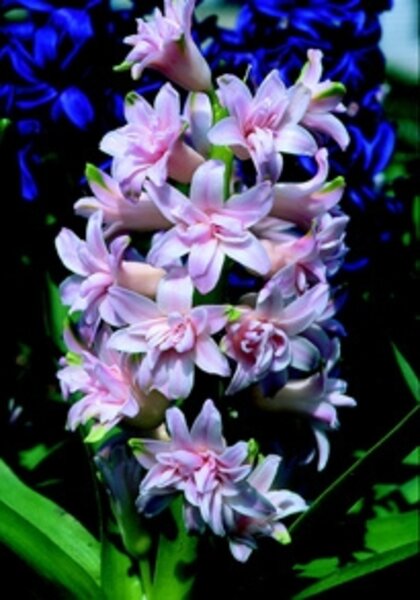Double the hyacinth pleasure and beauty
Loading...
Where have all the hyacinths gone?
In the 18th century, there were thousands under cultivation in the Netherlands, including hundreds of opulent double-flowered varieties, with two or even three rows of petals within each plump floret.
The doubles remained popular into the early 19th century, and the catalogs of the time were full of evocative names like Bouquet D’Orange and Pink Royal.
These days, the average bulb catalog contains scores of daffodil and tulip varieties, but only a handful of hyacinths, none of which are doubles.
Did they perish because of some inherent weakness, or did flower fashion simply leave them behind? Alan Shipp, a hyacinth grower and breeder who holds the British National Collection of Hyacinths, knows the answers.
According to Mr. Shipp, double hyacinths, which are often “sports” or spontaneous genetic mutations of single hyacinths, were first noted by horticulturists in the 1660s, but were generally discarded as “inferior.”
Eventually, though, the lavish flowers caught on, and by 1798, a leading Dutch catalog listed 1,227 varieties of hyacinths. Of that number, between 200 and 300 were doubles, including popular bicolored types with white petals and brightly colored inner “eyes” that contrasted with the outer petals.
The most famous bicolored double of all, says Shipp, was King of Great Britain, introduced in 1715 and featuring white-petaled flowers with bright-red “eyes.”
Like all of the bicolored doubles, King of Great Britain has disappeared from the marketplace. So why did the doubles die out? They had everything going for them – beautiful flower forms, a range of colors, alluring fragrance, and tough constitutions.
According to Shipp, the doubles’ popularity declined when tastes changed and gardeners in the late Victorian period turned to simpler, single-flowered varieties.
Although some of the best doubles – such as the shell-pink Chestnut Flower of 1880 – were introduced during or after the late Victorian era, the overall number of available varieties began to decline. After World War II, doubles were no longer sold.
Then, in 1985, a hyacinth renaissance began when Shipp, a Cambridgeshire farmer, began raising, propagating, and breeding the plants. Gradually adding to his collection, he has amassed nearly 200 varieties, including many doubles.
Some of the oldest varieties have come from Lithuania, where hyacinth lover Rita Raziulyte, a horticulturist at a research station near Vilnius, collected and cataloged hyacinths from all over the former Soviet Union.
Eventually she began corresponding with Shipp and exchanging bulbs. Many of Dr. Raziulyte’s hyacinths are varieties long considered extinct.
As his stocks of historic hyacinth varieties have increased, Shipp has introduced them back into commerce, sending bulbs to fellow hyacinth enthusiasts such as Scott Kunst, proprietor of Old House Gardens in Ann Arbor, Mich.
Thanks to those efforts, home gardeners can once again buy magnificent doubles such as General Kohler, a purple-blue cultivar introduced in 1878; and Madame Sophie, which has double white blossoms of Rubenesque proportions.
Shipp thinks that hyacinths are making a comeback. “There’s been a bit of an upturn in the UK,” he said, noting that the Royal Horticultural Society conducted its first trials of hyacinths this year. Of the 27 varieties tested, one – Hollyhock, introduced in 1930 — was a double.
Shipp’s search for old doubles goes on, as do efforts to breed new ones. Doubles seldom set seed, but he recently retrieved a small number of seeds from one of his Chestnut Flower plants.
It will take five years to know for sure, but it is possible that a new double variety is waiting in the wings.





